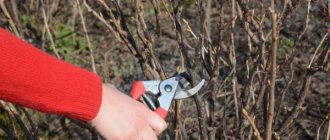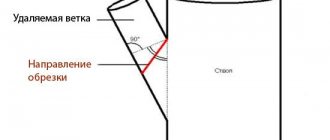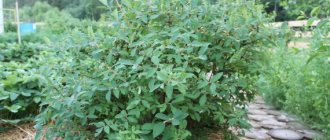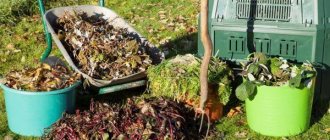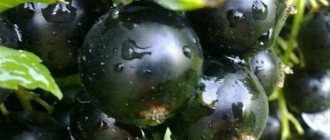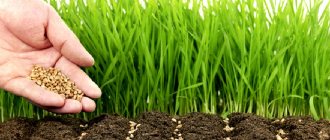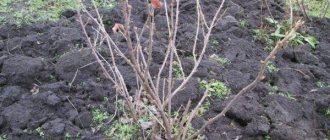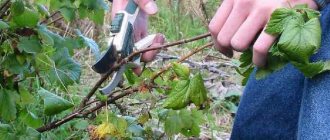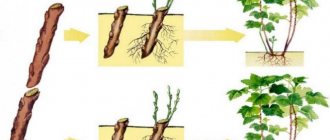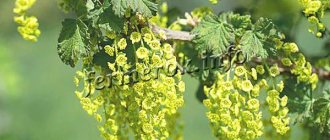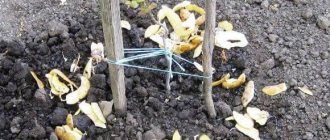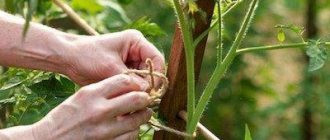The invaluable properties of the bush were valued by our ancestors for a reason, because plants were used to cure the most complex ailments and ailments. Nowadays, traditional medicine uses currants to treat various diseases and successfully cope with them in a short period of time. The fruits have found their use not only in medicine, but also in cooking and cosmetology. In order for currants to maintain an attractive appearance and delight them with a good harvest, they require proper pruning. This technique is also one of the main ones in preventing the spread of diseases and pests. It is very important to understand how and when to carry it out correctly, taking into account the phases of the vegetation growing season. The list of mandatory procedures includes pruning currants in the fall, otherwise in the summer the owners of their summer cottage may be left without delicious and healthy fruits.
Brief description of the currant bush
Currant is a perennial shrub 1.5-2 m high. It has carved leaves - sometimes shiny and smooth, sometimes matte and rough, covered with fine hairs. The color of the leaves can also be different: light green, dark green or green with a bluish tint. It depends on the variety.
Tips for the garden, vegetable garden and flower garden
Pickling cabbage at home - quick and tasty recipes
How to store cabbage in the cellar until spring
When to ferment cabbage in October 2021 according to the lunar calendar
Gardeners know many valuable varieties of currants: “Belarusian sweet”, “exhibition”, “golubka”, “Karelian”, “Dutch red”.
Currants do not like gusty cold winds, do not tolerate spring frosts well, and do not grow in damp places. Gardeners most often plant it between apple trees or along a fence. Often, lush green currant bushes with clusters of translucent scarlet, yellowish-white or black berries decorate garden paths and alleys. Currants grow especially well in soils rich in nitrogen. Therefore, it is better to plant it where pink clover had previously bloomed, vetch grass had turned green, and beans, beans or peas had curled their tendrils. After all, these plants enrich the soil with nitrogen.
In spring, flowers appear on currant bushes that look like small bells, collected in inflorescences in the form of brushes; small flower petals are colored reddish or greenish. Currants bloom in the garden earlier than other berry crops. Insects rejoice in these small storehouses of sweet nectar and willingly pollinate currant flowers.
Currant berries ripen in July. Tasty, sweet and sour, juicy. They contain many useful substances, vitamins, especially C and P. Moreover, the vitamin C in currant berries is very stable, it is well preserved in preserves and jams and is almost not destroyed during cooking. It also contains the growth vitamin - carotene.
Currant berries and leaves have healing properties. The fragrant leaves are used in marinades and pickles, to which they impart a unique taste and aroma. Housewives add them when pickling cucumbers, tomatoes, mushrooms and cabbage. And from currant berries they prepare jellies and mousses, juices and marmalade, make compotes, fruit drinks, wine and make fragrant jam. Fresh currants are also rubbed with sugar.
When to prune currants in the fall?
It all depends on the climatic conditions of the region. As a rule, work on formation and sanitary care is carried out 2-3 weeks before the onset of the first frost. It is important that the movement of sap stops before pruning begins. In our country, this period occurs at the end of October - beginning of November.
Optimal timing
Despite the fact that autumn is the best time for correcting currants, a number of other nuances should be taken into account that affect the rapid recovery of the bush.
Moon calendar
By focusing on the Moon, we can determine the timing of dacha work. Waning, 3 or 4 phases are the best periods for cutting.
The most favorable days in 2021:
- in September - 2, 5, 7, 9;
- in October - 1, 4, 5, 10, 29, 31;
- in November - 3, 7, 8, 11, 28, 30.
Regions of growth
To determine the time for pruning currants in the autumn, it is worth taking into account the climatic conditions of the area.
- The Moscow region is characterized by rapid soil freezing. Therefore, the activities need to be completed before the end of October.
- In the Leningrad region, the procedure will begin on October 15.
- Siberia is characterized by sharp temperature fluctuations, which means that plants prepare more quickly for the onset of cold weather. The best time is the first days of September.
Why do you need to trim currants?
The main crop of black currants is formed on branches 1-3 years old, mostly on their young annual growth. 4-year-old, and especially older 5-year-old branches give weak growth and, accordingly, a very weak harvest, in other words, they no longer bear fruit at full strength, but only suck nutrients from the bush and the ground. The situation is aggravated by the fact that old branches are often affected by diseases, excessively shade the bush and prevent young shoots from developing.
Note! Next we will talk about pruning black currants, the nuances and differences between white and red - read in a separate paragraph.
Tips for the garden, vegetable garden and flower garden
Pruning cherries in autumn for beginners in pictures step by step
Pruning plum trees in autumn for beginners in pictures step by step
Pruning cherries in autumn for beginners in pictures step by step
Timely and correct pruning of currants provokes the growth of new root shoots from the underground part of the bush, which are sometimes called “zero” or annual shoots, and also promotes better branching of the bush on perennial branches. Thus, constant replacement of shoots does not allow the berry bush to stagnate, forcing it to bear fruit abundantly every year.
Content
- 1. Pruning currants in autumn: the main tool
- 2. A simple scheme for pruning currants in the fall
- 3. Features of pruning red currants (as well as white ones)
- 4. After pruning currants in the fall
The main advantage of pruning currants in the fall before the spring is the confidence that the sap flow has already been completed, and the plant will definitely enter the new season in its “prime” of strength.
An additional factor is rather psychological: you are still in the garden, finishing other gardening work, of which there is a lot in the fall. And in early spring, as a rule, no one is in a hurry to get into the garden, especially if there is such a specific task as autumn pruning of currants. However, we remind you: you can prune any fruit crops both in autumn and in spring. But in the latter case, strictly before the start of sap flow. Pruning black currants in autumn - video from the talented journalist Natalya Petrenko
What will you need to prune currants in the fall?
To quickly and competently prune currants, you should prepare and check the serviceability of all the necessary tools.
May require:
- a garden knife, used to make even cuts, for thin branches;
- pruning shears, which remove both thin and medium branches;
- saw - a hacksaw with fine teeth to remove thick branches;
- a hedge trimmer that can cut out the thickest shoots;
- a lopper with which you can reach the branches thickening the bush from the middle.
Tools must be taken sharp and disinfected to minimize damage to the bush. It is recommended to treat the cut areas with garden varnish or any other means that prevents the penetration and spread of pathogens of infectious diseases.
Tools for work
Knowing how to properly prune black currants in the fall, a summer resident should acquire the necessary equipment. To perform high-quality bush pruning, you will need special garden tools :
A hacksaw is useful when removing outer branches whose diameter is more than 3 cm.
- The pruning shears should be lightweight and have narrow blades that allow you to easily reach the base of the shoot.
- Tick buds are cut off with a garden knife.
- A hedge trimmer will save you from crawling on your knees around a bush when you have to remove a thick branch at the root. In addition, the longer handles require less effort when cutting.
All tools should be sharpened well before work. This will allow you to make even cuts on the branches, without ragged edges. It is advisable to lubricate the screws of the pruning shears and hedge trimmers with machine oil to prevent the mechanism from jamming.
Everything happens for the first time . A person who has fallen in love with the hard work of a farmer gradually masters the wisdom of growing plants. Flowers planted for the first time will be rewarded with a colorful bouquet. Blackcurrant, well-groomed and pruned according to the laws of horticultural art, pleases with the correct shape of the bush and gives a generous harvest. The main thing is not to be afraid of the first step and lovingly begin the responsible pruning process, in which there is nothing complicated.
Stages of pruning currant bushes for beginners
Beginner gardeners, in order not to get confused, need to cut the branches in a certain sequence.
Stages:
- Sanitary pruning. First, dry branches are cut out, then green shoots (if they are not ripe, they will freeze in winter). Next, you need to remove shoots that grow towards the center of the bush, intertwine with others or lie on the ground. Lastly, diseased and deformed branches are cut out.
- Rejuvenating. Old shoots are cut out: over 8 years old for red and white currants, over 5 years old for black currants. Annual shoots are shortened by 1/3.
- Supportive. It is carried out only when the bush thickens. If the currants are 2-3 years old, you can miss this stage.
If the bush is very thick because it has not been thinned out for many years in a row, you cannot remove many shoots in one year. The currant may die. You can cut out no more than 1/3 of the skeletal branches.
Methods for forming a bush
The classic growing method involves forming it like a standard bush. It is suitable for beginner gardeners.
However, there are a number of more bizarre plant forms that are increasingly gaining popularity every year.
Standard currant
As a result of following this scheme, very attractive externally currant trees are obtained, especially impressive during the fruiting period:
- In the first year after planting, standard pruning is performed, removing part of the growth down to 1 bud directed outward.
- After six months, all young shoots on the trunk and zero shoots are eliminated.
- After 12 months, all growth on the main branches is cut down. The rest are shortened to 5 cm (then their size is increased to 10 cm).
- Next spring, the side segments are cut to 3 cm, which are subsequently trimmed to 25. Additionally, branches that are too thick are removed.
Michurinsky method
A very simple scheme recommended for use by novice agronomists, the essence of which is as follows:
- Bushes begin to be pruned only from the 5th year of life, while removing shoots half affected by diseases, injured and thickening the crown. Afterwards, it is necessary to feed the plant with fertilizers so that it can quickly recover from stress.
- A year later, all the branches are cut down, selecting and leaving 20 strong and fairly young segments.
- The next season, another half of the shoots are cut down, only 10 are retained. Those specimens that are 5 or more years old are completely removed. Cut branches in injured areas are covered with garden varnish.
On the trellis
The method helps improve the quality of fruits due to the degree of yield. Despite the small quantity, the berries grow large and have excellent taste characteristics.
Pruning currants for a trellis is carried out as follows:
- Immediately after planting, the lateral shoots are shortened to 5 cm - this allows the buds to be switched to fruiting mode.
- Trim all branches on the surface of the soil without affecting the main trunk. If the plant has 2 or more central branches, choose the strongest one. Subsequently, the root segments and those close to the ground are removed.
Scheme for pruning currants in autumn
It is necessary to remove branches from the base, all those that are more than five years old.
Cut off young branches that are not yet a year old.
Cut shoots for cuttings. Before winter they tend to take root well.
We remove all lateral, transverse branches, all this will shade the main shoots.
Do not cut off the tops of the main branches that you left. They need to be removed only when they are infected with anthracnose, aphids or mites. Thick buds indicate the presence of a mite, and curled leaves indicate aphids or anthracnose. Thin and young, fragile shoots are also removed, since they will definitely die from cold and frost.
Care after pruning currants in autumn
After pruning in the fall, the currants go to winter, and care for them is reduced to a minimum. However, before the onset of cold weather, several more procedures must be carried out.
Tips for the garden, vegetable garden and flower garden
When to remove carrots from the garden for storage in the Urals?
When to cut white cabbage
How to store cabbage in the cellar until spring
Immediately after pruning, it is recommended to fertilize the currant bush for beginners. To do this, the soil around the roots is slightly loosened, potassium-containing additives or superphosphate are added, and fresh organic matter is laid out around the bushes. But it is better not to feed currants with nitrogen in the fall - they may not begin to grow in a timely manner.
To protect the plant from diseases and parasites, currants are sprayed with special compounds - for example, karbofos, colloidal sulfur, Bordeaux mixture.
Before winter itself, for beginners, you need to take care of covering the roots of the plant. It is customary to mulch the ground around the currant with any heat-insulating material - for example, sawdust or peat. The layer should be about 10 cm, then the ground will not freeze and the roots of the plant will not be damaged.
Aftercare
When autumn comes, some of the foliage is still retained on the currant bushes, so the spread of diseases and harmful insects should be prevented.
To do this, use Bordeaux mixture at a concentration of 1% to treat the green mass of the bush. Don’t neglect cleaning up the waste left after pruning. Additionally, the surface of the substrate in the near-trunk area is loosened using a fork or rake, stepping back about 20 cm from the base. This allows for the supply of the required amount of oxygen to the root system.
To achieve maximum efficiency when loosening, a potassium-phosphorus mixture is incorporated into the soil. It is also allowed to dig rotted manure around the perimeter at a distance of 30 cm from the plant.
Advice from experienced gardeners
Recommendations from experienced colleagues will help novice gardeners avoid mistakes:
- Not only adult shrubs, but also young seedlings need pruning.
- Excess shoots should be removed at ground level. This method stimulates better illumination of the bush, which will lead to increased yield.
- Even a small bush should have no more than 5 branches. From this amount new strong shoots are formed.
- It is recommended to carry out the procedure no later than mid-October so that the currants are not damaged by frost.
0
Scheme for beginners
- During the first 5 years, currant branches are not pruned.
- On the 5th autumn, you need to cut off almost half of the branches of the bush: dry, affected by diseases and pests, broken, shading the crown. After the procedure, it is imperative to provide good feeding to the bush so that it gains strength for further development.
- After a year, about 20 new shoots are left, and all other shoots are removed.
- Next year you can remove the second half of the old branches, leaving 10 young shoots. Branches 5 years old and older are cut off.
- After pruning, garden varnish should be applied to the cut areas.
